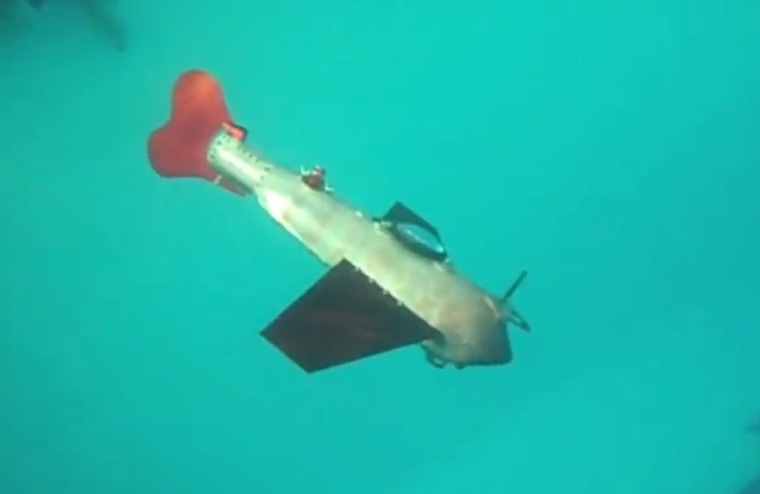A recently hatched robotic fish comes with an innovative pump that allows it to glide through rivers, lakes, and the seas until it runs out of room.
When it needs an extra boost, the robot flaps its tail.
The robot is a fish and glider combination, explained Xiaobo Tan, an associate professor of electrical and computer engineering at Michigan State University.
The gliding mechanism saves battery life that is otherwise quickly exhausted when swimming.
In order to glide, the robot is equipped with a pump mechanism that pushes water in and out of its body. This changes the robot's buoyancy, causing it to either sink or rise.
The fish's battery pack sits on rail-like system that allows its weight to shift forward and backward, which in turn points the robot's nose up or down.
"If you make the robot heavier than water, it will sink and simultaneously go forward horizontally (if it is nose-down)," Tan explained via email to NBC News.
"In technical terms, that is because the lift force generated during the 'sinking' motion has a horizontal component that makes the robot travel in the horizontal direction while descending in the vertical direction."
Use the pump-and-battery-on-a-rail combo to make the robot lighter than water and point its nose upward, and it will ascent while moving forward, he added.
"Once it is set to a desired buoyancy level and pitch direction (nose-up/nose-down), the robot will go forever if the depth is infinite," Tan said.
Battery power is used to run the pump and shift the battery pack. It should have enough juice for about 200 dive cycles. If the water is deep enough, say 1,600 feet (500 meters), the robot could travel about 124 miles (200 kilometers), Tan said.
The gliding and swimming combo makes the robot adaptable to environments from shallow streams to deep lakes and rivers with rapid currents.
Called Grace, for gliding robot ace, the mechanical fish is designed to carries sensors to keep tabs on everything from water temperature to pollutant levels.
It recently took a cruise in the Kalamozoo River where it detected increased oil pollutants downstream from the site of a 2010 spill.
Grace is one of several robofishes that may soon be plying the world waterways to collect data for scientists, inspect ships for contraband, and spy behind enemy lines.
John Roach is a contributing writer for NBC News. To learn more about him, check out his website.
